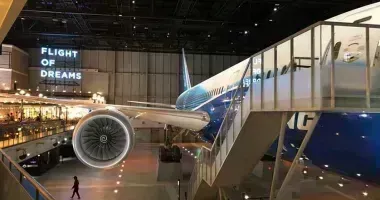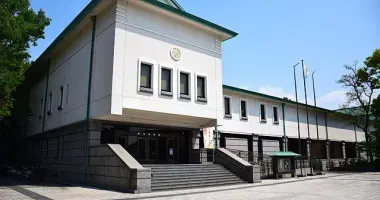Historical Museum of Waterworks & Sewerage
The Historical Museum of Waterworks & Sewerage in Nagoya is an interesting free museum on the history of water management in the city from Edo times until the present day.
- Historical Museum of Waterworks & Sewerage Exhibits
- Historical Museum of Waterworks & Sewerage Access
Historical Museum of Waterworks & Sewerage, Nagoya 水の歴史資料館,名古屋
The free Historical Museum of Waterworks & Sewerage in the east of Nagoya will be of interest to people keen on engineering or Japanese history.
The Nobi Plain centered on Nagoya is the downstream area for the three major rivers known as the Kiso Three Rivers (the Ibi, Kiso and Nagara) that flow from the mountains of the central Japan Alps. Controlling the rivers' flows to avoid flooding and making their water available for the area's inhabitants have been problems for the city's planners since its earliest days.
 Historical Museum of Waterworks & Sewerage, Chikusa-ku, Nagoya
Historical Museum of Waterworks & Sewerage, Chikusa-ku, Nagoya Edo Period water pipes, Historical Museum of Waterworks & Sewerage, Chikusa-ku, Nagoya
Edo Period water pipes, Historical Museum of Waterworks & Sewerage, Chikusa-ku, Nagoya
Historical Museum of Waterworks & Sewerage Exhibits
The Historical Museum of Waterworks & Sewerage has four exhibition rooms. The first is dedicated to the city's water management in the Edo and Meiji periods.
Some amazing Edo Period wooden pipes and tanks from near Nagoya Castle can be seen on display after they were unearthed in recent excavations.
Edo Period (1600-1868) water management is also illustrated with contemporary drawings, maps and wood block prints from the time.
Great developments in improving sewage systems and preventing water-bourne diseases came about in the Meiji Period (1868-1912) as Japan increasingly industrialized, modernized, urbanized and westernized.
One of the many western experts brought over by the Japanese government to help with public works programs at this time was William Kinnimond Burton (1856-1899), a largely self-taught Scottish engineer, who was working in London, when he was invited to Japan and took up a position as an unofficial professor of sanitary engineering at Tokyo Imperial University (now Tokyo University).
Burton became the consultant engineer for the Japanese government overseeing the water and drainage systems of several Japanese cities, including Tokyo, Yokohama, Nagoya, Sendai, Osaka, Kobe, Okayama, Fukuoka, Mojiko and Shimonoseki as well as Japanese-occupied Taiwan. Indeed his sand filtration system is still in use in Shimonoseki today.
Remarkably Burton also designed Japan's first skyscraper, the 12 story Ryounkaku in Asakusa (destroyed in the Great Kanto Earthquake of 1923) and as a keen photographer help found the Japan Photographic Society.
Wall panels showing Burton and the government bonds (in British Pounds) to pay for the public works illustrate this period.
The second exhibition room has exhibits on the drinking water distribution and water purification system. The Chayagasaka area of Nagoya has a large water purification plant and the original brick, Meiji Period Old Nabeyaueno Water Purification Plant No. 1 Pump Station building still stands there, north of the museum.
Further exhibits in this room also explain how the water was made available for fire fighting through early fire hydrants. Historical Anglo-American Venturi water meters from the early 20th century are on display in glass cases.
 Historical Museum of Waterworks & Sewerage, Chikusa-ku, Nagoya
Historical Museum of Waterworks & Sewerage, Chikusa-ku, Nagoya
 Historical Museum of Waterworks & Sewerage, Chikusa-ku, Nagoya
Historical Museum of Waterworks & Sewerage, Chikusa-ku, Nagoya
The third exhibition room is dedicated to sewerage treatment in Japan from human sewage being used as fertilizer in the early days to modern water treatment plants using the activated sludge method.
A poster shows the benefits of a modern sewerage system as washing can be dried outside, there is no need to burn copious amounts of incense to mask the terrible smells and the man of the house can enjoy his cigarette outside. The third exhibition room also has a manhole cover from World War II and a manhole cover celebrating 100 years of modern water management in Nagoya.
The fourth exhibition room introduces disaster preparations in case of flooding and earthquakes - both common occurrences in Japan. Outside in the garden are larger exhibits of water pipes.

Poster showing the advantages of a modern sewerage system, Historical Museum of Waterworks & Sewerage, Chikusa-ku, Nagoya
Old Nabeyaueno Water Purification Plant No. 1 Pump Station
Access - how to get to the Historical Museum of Waterworks & Sewerage in Nagoya
The Historical Museum of Waterworks & Sewerage is about 1.2km south of Chayagasaka Station on the Meijo Line and a similar distance north of Kakuozan Station on the Higashiyama Line of the Nagoya subway, four stops from Nagoya Station. From either station the Nagoya city bus 茶屋12系統 runs to the Tsukigaoka bus stop outside the museum.
The museum is also about 1 km west of Jiyugaoka Station on the Meijo Line.
Historical Museum of Waterworks & Sewerage
1-1-44 Tsukigaoka
Chikusa-ku
Nagoya
464-0043
Tel: 052 723 3311
Hours: 9.30 am-4.30 pm; closed Monday or the next day if Monday is a national holiday.
 Bricks used in water filtration systems, Historical Museum of Waterworks & Sewerage, Chikusa-ku, Nagoya
Bricks used in water filtration systems, Historical Museum of Waterworks & Sewerage, Chikusa-ku, Nagoya
Historical Museum of Waterworks & Sewerage, Chikusa-ku, Nagoya


















